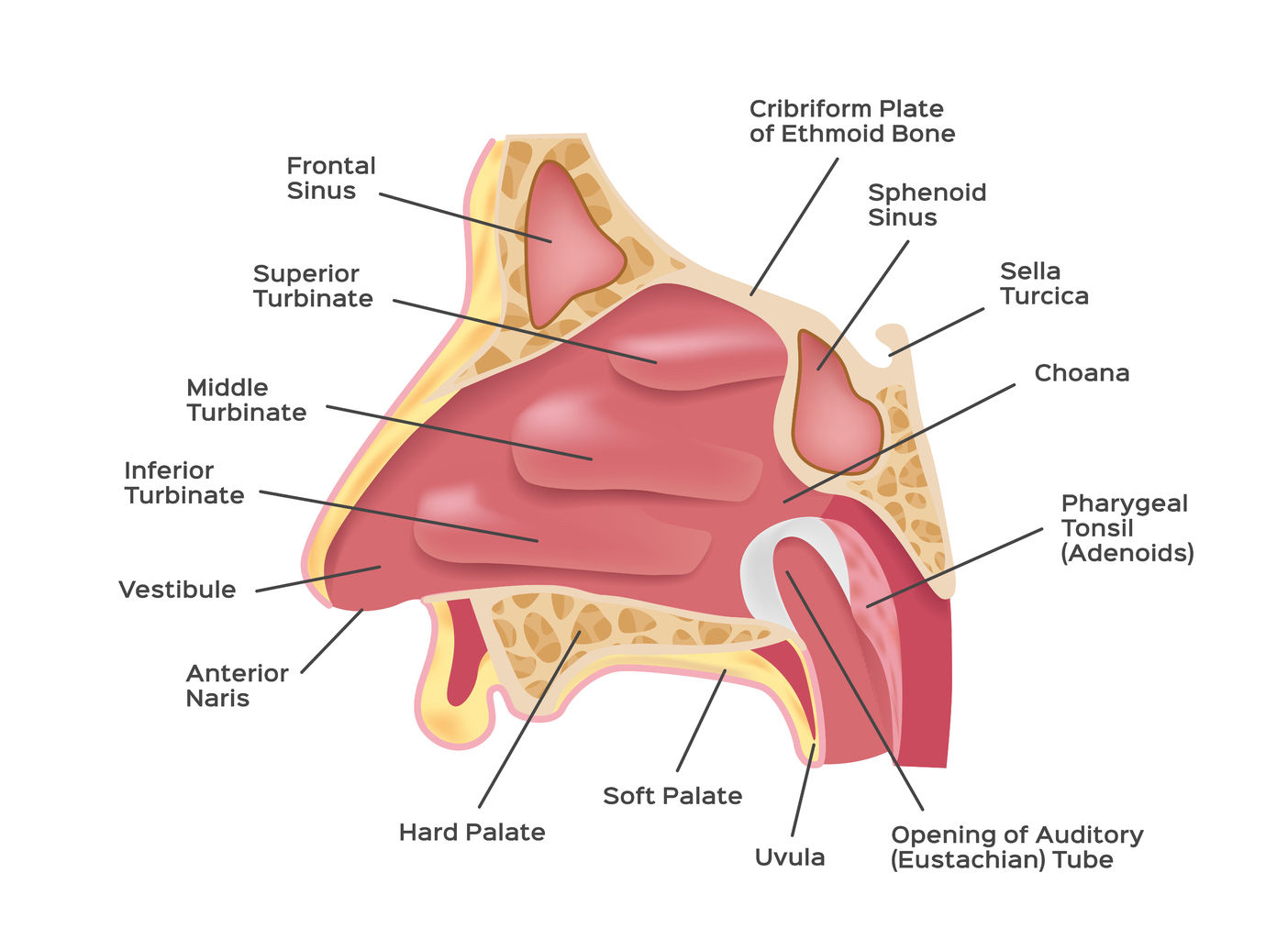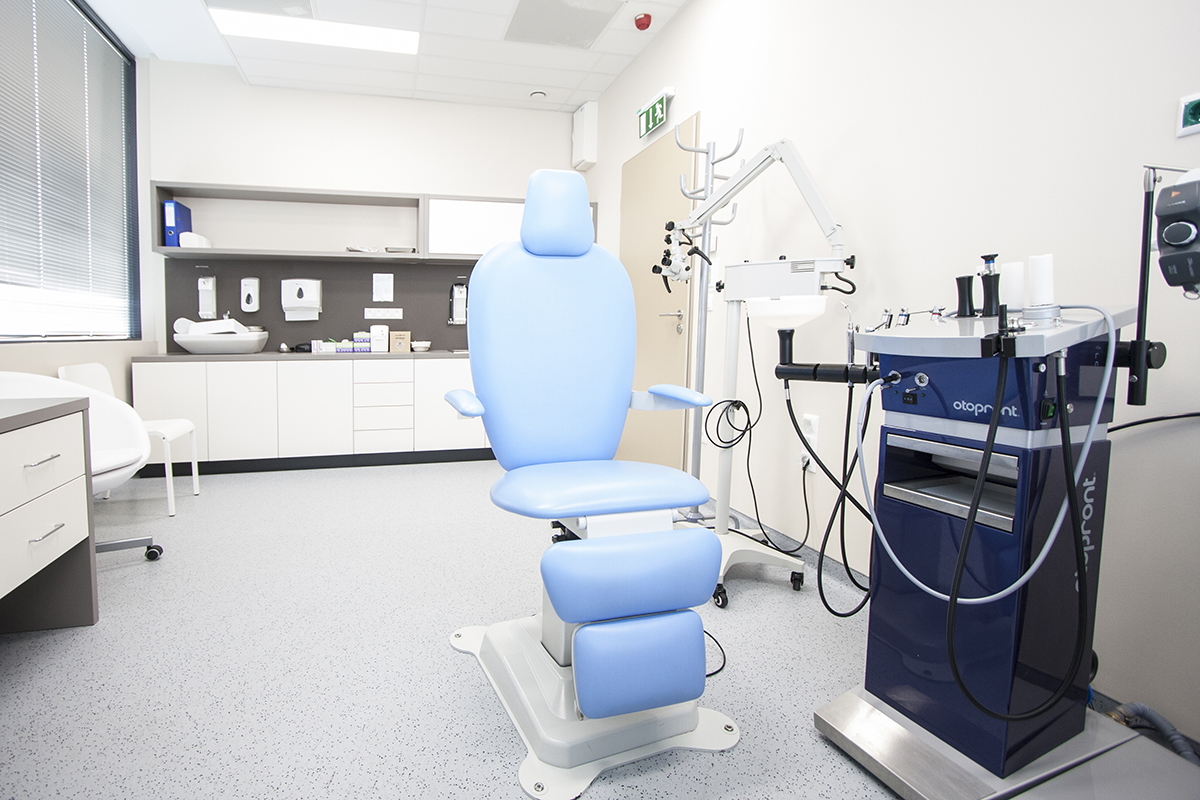Nasal turbinates (or conchae) are long, narrow, curled shelves of bone which protrude into the breathing passage of the nose. The turbinates divide the nasal airway into 4 groove-like passages, and are responsible for forcing inhaled air to flow in a steady, regular pattern around the largest possible surface area of nasal mucosa, which – as a ciliated mucous membrane with shallow blood supply – cleans and warms the inhaled air in preparation for the lungs.
The inferior turbinates are the largest, and can be as long as the index finger in humans. They are responsible for the majority of airflow direction, humidification, heating, and filtering of air inhaled through the nose.
Sometimes the inferior turbinates can become enlarged – a condition called inferior turbinate hypertrophy. The most common causes of inferior turbinate enlargement are the long-term use of “conventional” nose drops and nasal sprays, allergic rhinitis, chronic non-allergic rhinitis, side effects of certain medications, nasal congestion, acid reflux and pregnancy.




